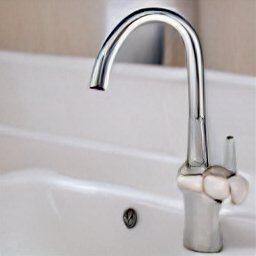There are many different types of indoor faucets on the market today. Some of the most popular types are described below.
Single handle faucets are the most common type. They have one handle that controls both the temperature and the flow of water.
Two handle faucets have separate handles for controlling the temperature and the flow of water. This type is often used in bathrooms, where people want more control over the temperature of the water.

Wall-mounted faucets are installed on the wall, rather than on the sink. This type is popular in bathrooms, where it can save space.
Touchless faucets are powered by a battery or by electricity. They are activated by a sensor, which detects when your hands are near the faucet. This type is popular in homes with children, because it helps keep them from getting sick by avoiding contact with germs.
Pull-out faucets are installed on the sink, but the spout extends out over the edge of the sink. This type is popular in kitchens, where it can be used for tasks such as filling pots or washing dishes.
Pull-down faucets are similar to pull-out faucets, but the spout is longer and can be pulled down further. This type is popular in kitchens, where it can be used for tasks such as filling pots or washing dishes.
There are many types of indoor faucets available on the market. Some of the most common types are:
- Single handle faucets
- Double handle faucets
- Touchless faucets
- Sensor faucets
Each type of faucet has its own unique benefits and drawbacks.
Single handle faucets are the most common type of faucet. They are easy to use and are very versatile. They can be used for both hot and cold water.
Double handle faucets are also very common. They are a bit more complicated to use than single handle faucets, but they offer more flexibility in terms of water temperature.
Touchless faucets are becoming more and more popular. They are very easy to use and are very hygienic since you don’t have to touch them.
Sensor faucets are also becoming more popular. They are very easy to use and conserve water since they turn off automatically after a certain amount of time.